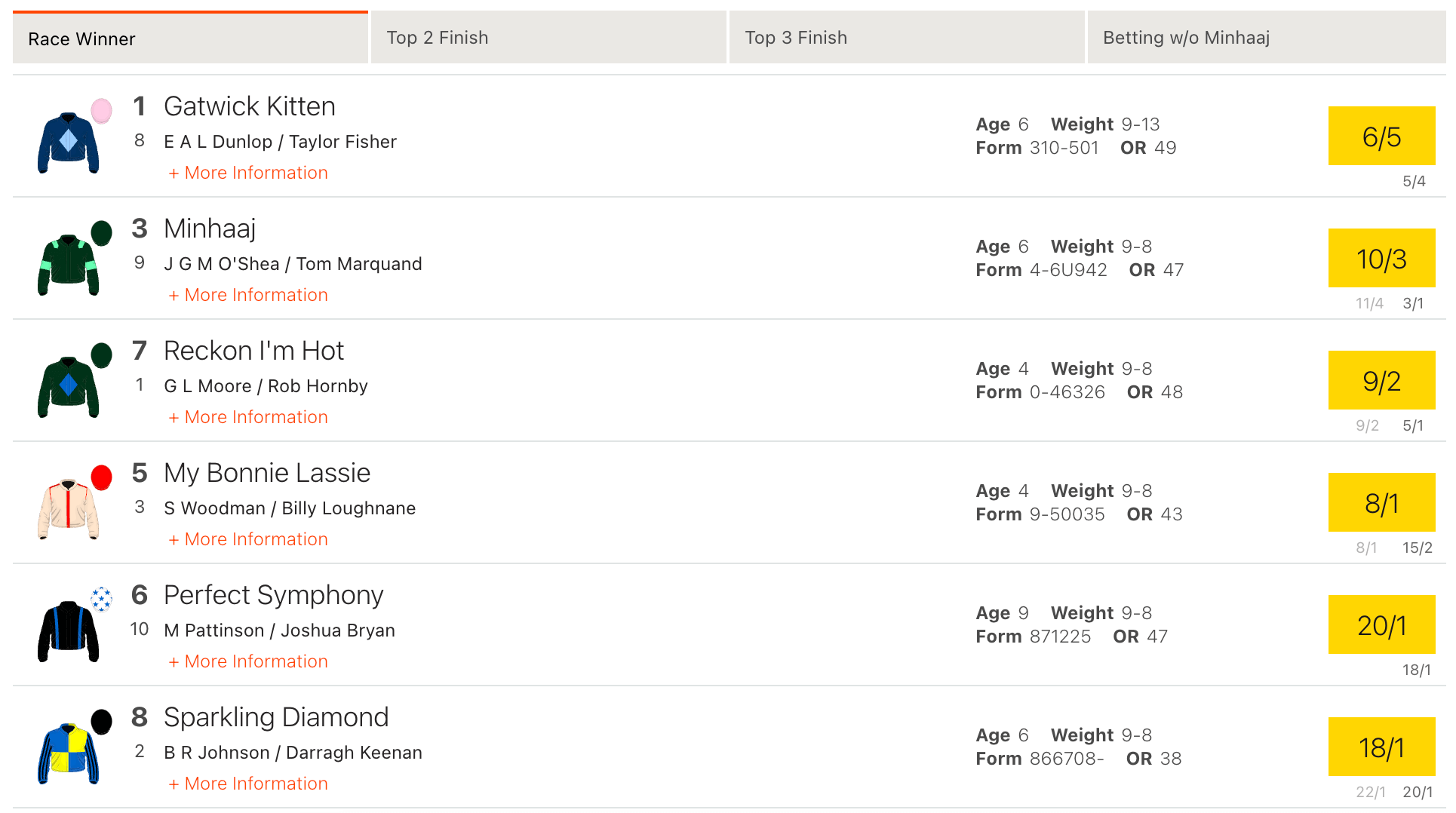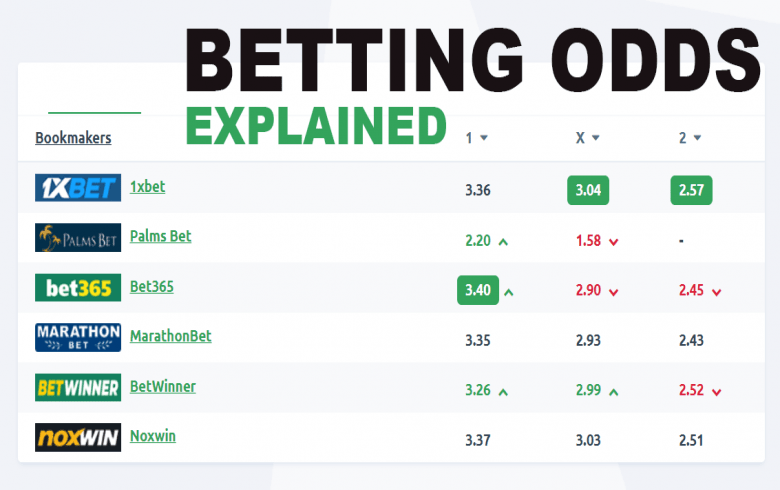How to odds work in sports betting

For favored bets, the bet odds will start with a negative number and they tell you how much you need to bet to win $ If the odds are how to odds work in sports betting, a. An easy way to remember: The number attached to the “+” symbol reflects how much you would win for every $ wagered. So a $ bet would win. If you want to bet on Golovkin to win the fight (8/13 odds), calculate your winnings by multiplying your wager by the quotient of 8 ÷ 13 (). If you bet $ And for fractional odds, those winnings are calculated by taking the wagered amount and multiplying it by the fraction. If $25 was wagered for the horse racing.
The Mechanics of Odds in Sports Betting
Welcome, sports betting enthusiasts! Today, we delve into the intricate world of odds in sports betting. For those with a passion for predicting outcomes and enjoying the thrill of the game, understanding how odds work is vital. Let's break it down step by step.
Understanding Different Odds Formats
One of the first things you encounter in sports betting is the various odds formats. These may include decimal odds, fractional odds, and American odds, each representing probabilities differently. Decimal odds are commonly used in Europe and represent the potential payout for every unit wagered. Fractional odds are prevalent in the UK and imply the profit you stand to make relative to your stake. American odds, on the other hand, highlight how much profit you could make on a $100 bet ( 100 for a $100 profit, -200 for a $100 loss).
Calculating Payouts Based on Odds
Once you understand odds formats, the next crucial step is calculating potential payouts. This involves multiplying your stake by the odds to determine your total return, including your stake. For example, with decimal odds of 2.50, a $20 bet would yield a total return of $50 (2.50 x $20). Always remember, the higher the odds, the higher the potential return, but also the higher the risk.
Implied Probability and Odds Movement
Another key aspect is implied probability, which represents the likelihood of an outcome as indicated by the odds. Converting odds to implied probability helps in assessing the accuracy of odds offered by bookmakers and identifying potential value bets. Moreover, odds are not fixed; they can fluctuate based on various factors like team news, injuries, and betting trends. Being aware of these changes can assist you in making informed betting decisions.
Conclusion
In conclusion, understanding how odds work in sports betting is fundamental for anyone looking to engage in this thrilling pastime. By grasping different odds formats, calculating potential payouts, and monitoring implied probability and odds movement, you can enhance your betting experience and potentially achieve success in the long run. Keep exploring and enjoy the exciting world of sports betting!
How to read and calculate sports betting odds
What does 8 to 5 odds mean? Using 8-5 as an example, this means that, for every $5 bet, one would win about $8 and get $13 back. For a $2 bet on a horse that is 8-5, the winner would receive about $5.20.
What do the odds +/- mean in betting? The American odds are excellent for calculating payouts quickly, especially if you use a flat $100 wager. The “+” odds will show you what you will win with a $100 wager. Meanwhile, the “-” odds show what you'll need to wager to win $100.
What does minus 180 odds mean? The odds listed next to a favorite show how much you'd need to wager to win $100. For instance, let's say a moneyline favorite appears as -180 on the betting board. So, a bettor looking to win $100 will risk $180, while a bettor looking to win $50 would wager $90.
Does negative odds mean you lose money? What Does It Mean When Odds Are Negative? Negative numbers (in American money line odds) are reserved for the favorite on the betting line and indicate how much you need to stake to win $100. Conversely, positive numbers are attached to the underdog and refer to the amount you could win if you bet $100.
For example, if the American odds are +200, this means that you would win $200 if you bet $100. For positive odds, the formula is: 100 / (Money line odds + 100). For negative odds, the formula is: Money line odds / (Money line odds + 100).How do you calculate sports bet odds? Money Line odds or American odds
Understanding sports betting odds and how to read them
Thanks for contacting us. We've received your submission. And for fractional odds, which are perhaps most commonly seen during horse races, the numerator details the number of times the bookkeeper expects the result to fail while the denominator illustrates the number of times they expect the result to succeed. Already got it down. The first number of the fraction indicates how much profit you would make if you staked the second number of the fraction.
Decimal odds are also fairly easy to work out, with you just needing to multiply the odds by your stake to work out your winnings. The numerator of the fraction shows how much you stand to make as profit should you stake the denominator. They can also be used to show the probability of a bet, with top heavy fractions being less likely to occur, whilst bottom heavy fractions are more likely to happen.
Decimal odds are less commonly used in the UK, however they do prove to be much easier to understand. To work out your potential returns, all you have to do is multiply your stake by the decimal odds, with your stake then automatically being included in this total payout. If the odds for a market are priced above 2. That's our complete guide on explaining betting odds and how they work, helping you know exactly why bookmakers use odds, as well as how to use odds to work out probability.
Tom Fuller. What are betting odds. Read on to learn more. Wagers on underdogs, which always have positive odds, are typically more likely to lose. However, a winning bet will produce a bigger profit with a higher payout. It can also be represented with a colon or dash. How to odds work in sports betting The numerator represents the amount a bettor could win divided by the denominator, the amount wagered.
Following the formula of multiplying the amount wagered by the divided fraction will calculate the payout. Negative odds indicate that the bet is favored to win, and therefore results in a lower potential profit and total payout for winning bets. The Inquirer is not an online gambling operator, or a gambling site. We provide this information about sports betting for entertainment purposes only.
Skip to content. Sports Betting. Share Icon. Facebook Logo. Link Icon. Link copied to clipboard. Betting Commercial Content.  Provided by Action Network, official betting partner of The Inquirer. American Odds. Fractional Odds. Decimal Odds. Moneyline Odds. How To Scale Your Wager.
Provided by Action Network, official betting partner of The Inquirer. American Odds. Fractional Odds. Decimal Odds. Moneyline Odds. How To Scale Your Wager.
Popular Pages
- What states dont allow sports betting
- How to open a sports betting account
- How i got banned from sports betting
- Is online sports betting legal in colorado
- Can you bet sports at the meadowlands
- Can you bet on sports in massachusetts
- Can you bet on sports in washington state
- Who to follow on twitter for sports betting
- Does overtime count in sports betting
- What are the differences between gambling and sports betting